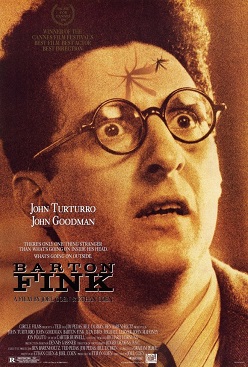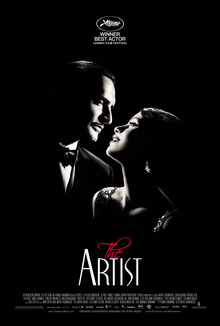There are two classic movies about the effect of the arrival of sound on films and the people who were silent-movie stars,
Singin' in the Rain (Stanley Donen and Gene Kelly, 1952) and
Sunset Blvd. (Billy Wilder, 1950). Neither of them won the Academy Award for best picture. Coming half a century later, Michel Hazanavicius's
The Artist, which did, looks oddly like an anachronism. It is certainly a tour de force: a mostly silent film with a few witty irruptions of sound in the middle when the protagonist George Valentin (Jean Dujardin), having learned that his career as a film star is ending, suddenly begins to hear sounds, even though he seems incapable of producing them himself. (At the end of the film, Valentin speaks one line, "With pleasure," revealing his French accent.) The project grew out of Hazanavicius's admiration of silent films and their directors, and it fulfilled his own desire to make one himself. The title and the central predicament of George Valentin are an acknowledgement of the fact that silent film is a distinct art form, one lost with the advent of sound. At the expense of his career, Valentin insists on preserving the art -- much as Charles Chaplin did by refusing to make
City Lights (1931) and
Modern Times (1936) into talkies, long after sound had taken hold. But Valentin is no Chaplin, and his effort, an adventure story in the mode of the films that had made him famous, is a flop, coincidentally opening on the day in 1929 when the stock market crashed. Meanwhile, a younger fan and something of a protégée of his, Peppy Miller (Bérénice Bejo), becomes a huge star in talkies. From this point on, the script almost writes itself, especially if you've seen any of the versions of
A Star Is Born, which is why some of us wonder how this undeniably entertaining film became such a hit and a multiple award-winner. It was nominated for 10 Academy awards and won half of them: picture, actor, director, costume design (Mark Bridges), and original score (Ludovic Bource). To my mind, Hazanavicius's screenplay is at fault for not making Valentin's supine reaction to sound entirely credible: Is it actor's ego? A fear of the new? Embarrassment at his accent? And the decision to play Valentin's suicide attempt as comedy feels like a failure of tone on the part of the writer-director. That said, the performances by Dujardin, Bejo, and the always invaluable John Goodman as the studio boss keep the movie alive. I just don't think it belongs in the company of
Singin' in the Rain and
Sunset Blvd.





